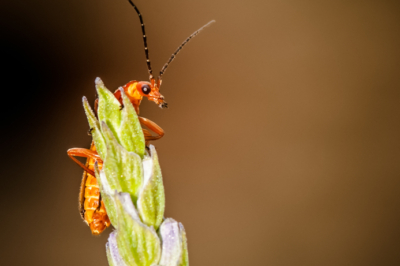Due to the high content of essential oils, pests such as aphids, spider mites and other vermin avoid the intensely fragrant lavender. For this reason, lavender can also be used as a natural remedy against such plant pests. However, weakened plants are often attacked by fungi and die from it.

Contents
Waterlogging causes root rot
Waterlogging in particular, or excessive moisture in general – which includes high humidity – is a major problem for lavender. Wetness causes the roots to rot and die. Paradoxically, as a result, the plant dries up, because the damaged roots do not allow enough water to reach the above-ground parts of the plant. Often this phenomenon occurs in relatively mild but wet winters – as well as when adequate drainage was not provided in advance. Too frequent and / or incorrect watering also leads to root rot.
Quickly treat fungal diseases
Such diseased and weakened lavender plants are very often attacked by fungi that cause the plant to die quickly. Particularly feared is the so-called Phorma Lavandula, also known as lavender death or lavender dieback. This fungus causes first brown, then black spots, especially on the leaves. These should be removed as soon as possible, only then the plant still has a chance. Fungal diseases spread very quickly, so you should always keep a watchful eye on your lavender.
What to do with rotting roots?
With a little luck, you can still save lavender with rotting roots To do this, the following measures are necessary:
- Dig up planted lavenders with the entire root ball, if possible.
- Remove the soil and check the roots.
- Cut away rotting roots with a sharp and clean cutting tool.
- Use a knife if possible, as scissors bruise too much.
- The cut surface should be set at an angle.
- Transplant the lavender into fresh, dry soil or place it in a new pot with fresh substrate.
- Water little!
Tips & Tricks
Furthermore, you can use an infusion of dried lavender flowers or lavender oil to control pests such as aphids on other plants. Steep about one to two handfuls of flowers in a liter of boiled water – preferably for several hours – and spray the infested plants with the cooled lavender water.









